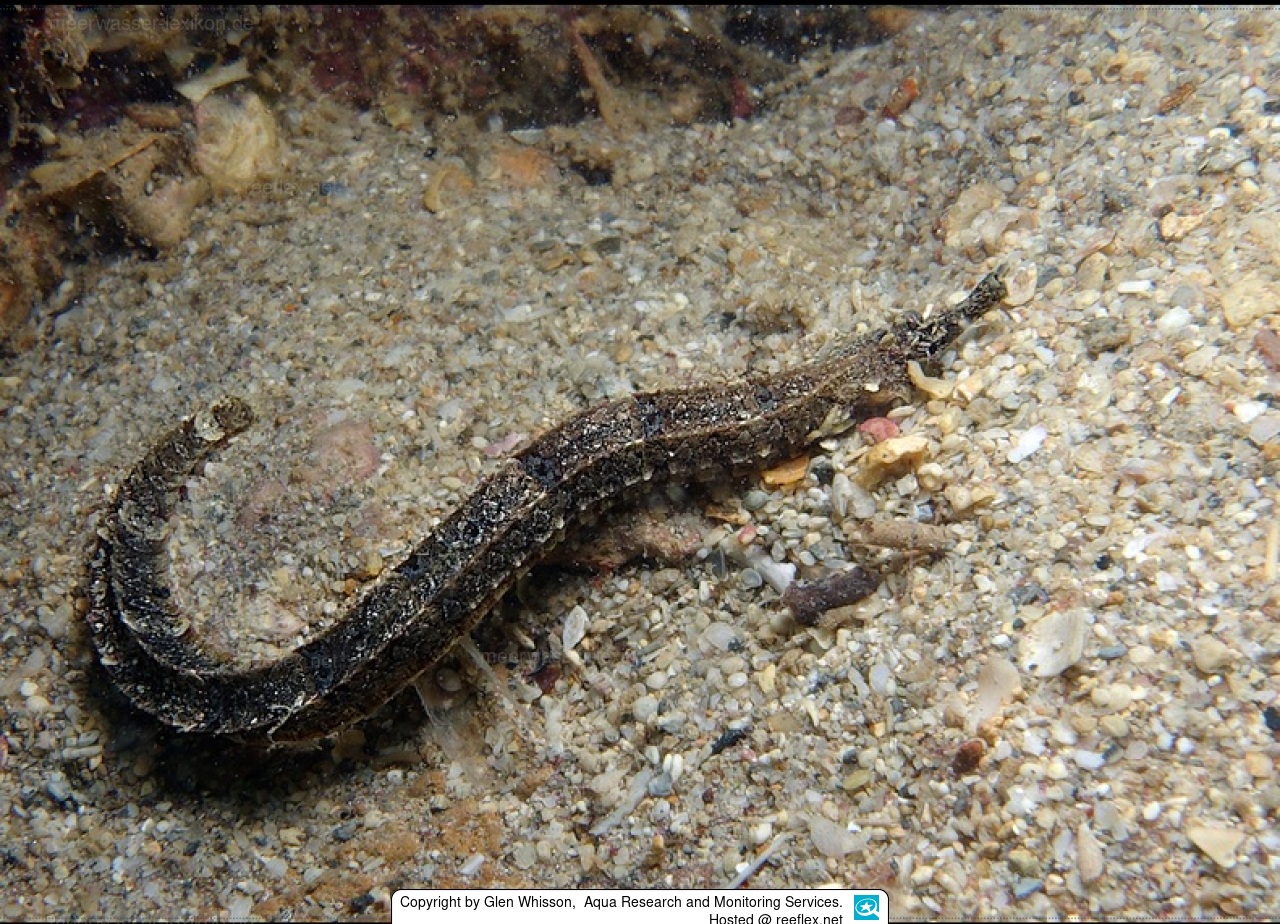Info
Choeroichthys latispinosus Dawson, 1978
The Muiron pipefish inhabits coral reef scree slopes around the Muiron Islands, Western Australia as an endemic species.
The pipefish is brown overall, its jaws show an irregular light mottling as well as some spots elsewhere on the snout.
There are three light spots on the mid-dorsal line, and there are also light spots on the dorsal side of the trunk and caudal fin.
There are irregular light speckles below the center of the dorsal fin, and the dorsal fin itself is narrowly fringed with black or brown.
All fins darkly pigmented, dorsal fin not bicolored.
Choeroichthys latispinosus is distinguished from other species in the genus by a projecting, recurved, spiny anterolateral proboscis dorsum.
Etymology:
The genus name "Choeroichthys" comes from the Greek "choiros" (pig) the Greek "ichthys" (fish).
The species name "latispinosus" is derived from the Latin "atus" (side) and "spinosus" (spiny), referring to the protruding lateral snout dorsum.
Similar species:
Choeroichthys brachysoma, but has a less deep snout that lacks the lateral spines at the tip.
Choeroichthys smithi has one less dorsal fin ray and a shorter dorsal fin base.
The Muiron pipefish inhabits coral reef scree slopes around the Muiron Islands, Western Australia as an endemic species.
The pipefish is brown overall, its jaws show an irregular light mottling as well as some spots elsewhere on the snout.
There are three light spots on the mid-dorsal line, and there are also light spots on the dorsal side of the trunk and caudal fin.
There are irregular light speckles below the center of the dorsal fin, and the dorsal fin itself is narrowly fringed with black or brown.
All fins darkly pigmented, dorsal fin not bicolored.
Choeroichthys latispinosus is distinguished from other species in the genus by a projecting, recurved, spiny anterolateral proboscis dorsum.
Etymology:
The genus name "Choeroichthys" comes from the Greek "choiros" (pig) the Greek "ichthys" (fish).
The species name "latispinosus" is derived from the Latin "atus" (side) and "spinosus" (spiny), referring to the protruding lateral snout dorsum.
Similar species:
Choeroichthys brachysoma, but has a less deep snout that lacks the lateral spines at the tip.
Choeroichthys smithi has one less dorsal fin ray and a shorter dorsal fin base.







 Dr. Glen Whisson, Aqua Research and Monitoring Services, Australien
Dr. Glen Whisson, Aqua Research and Monitoring Services, Australien







